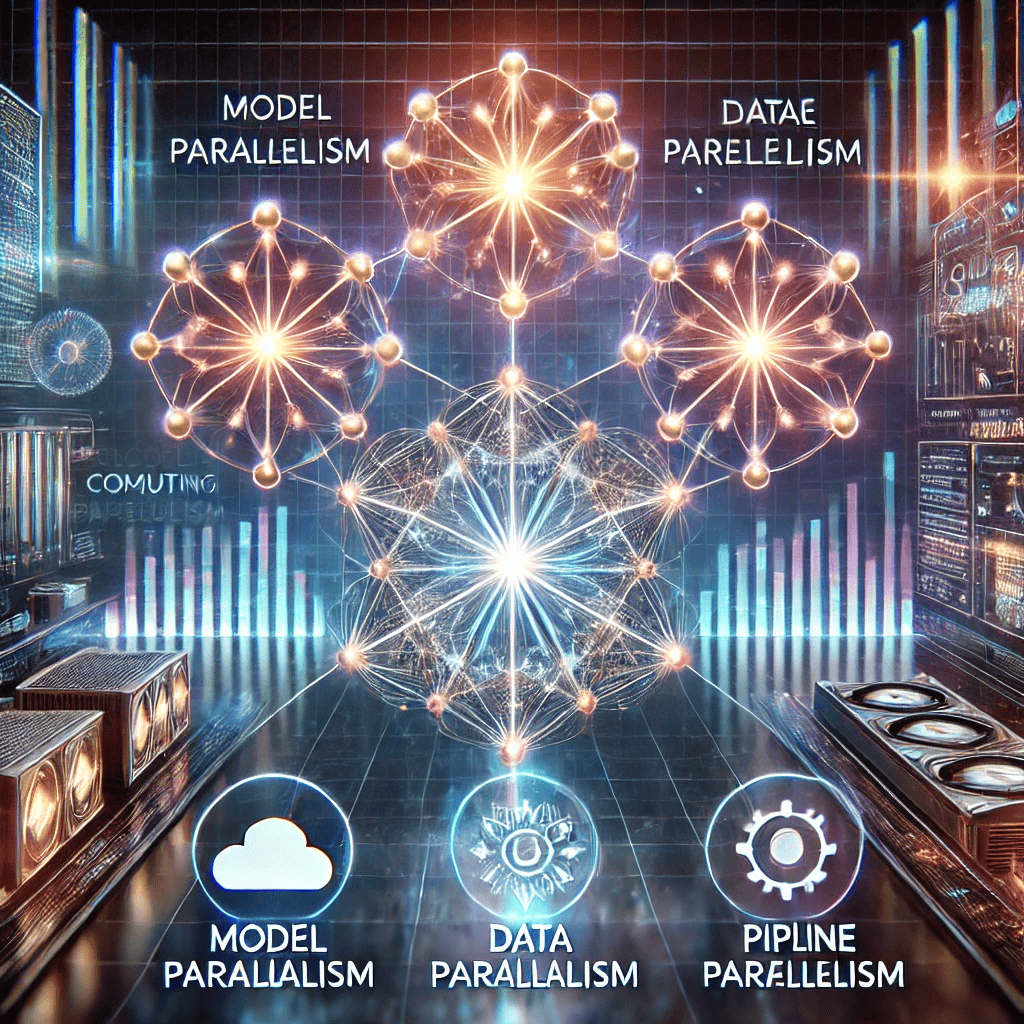DeepSeek
( Advanced AI for Search & Code Generation )
DeepSeek is an advanced AI model series specializing in natural language processing and code generation. Known for models like DeepSeek-V2 and DeepSeekCoder, it excels in reasoning, text generation, and AI-driven problem-solving.Lorem ipsum dolor sit amet, consectetur adipiscing elit. Ut elit tellus, luctus nec ullamcorper mattis, pulvinar dapibus leo.
Start Now
Get free access to DeepSeek-V3 and explore its advanced intelligence firsthand!
Get DeepSeek App
Stay connected with DeepSeek-V3 – Your ultimate free AI companion!
Technical Architecture of DeepSeek
Model Architecture
DeepSeek follows a Transformer-based architecture, similar to models like GPT, LLaMA, and Gemini. Key components include:
- Self-Attention Mechanism: Enhances contextual understanding by weighing the importance of different words in a sentence.
- Feedforward Networks (FFN): Enhances non-linearity and complexity handling.
- Positional Encoding: Retains word order information, ensuring sequential understanding.
- Layer Normalization & Dropout: Improves stability and prevents overfitting.
Depending on the version, DeepSeek may come in different sizes (e.g., small, medium, and large models with billions of parameters).


Optimization Techniques
To improve speed, efficiency, and scalability, DeepSeek implements:
- Mixed Precision Training (FP16/BF16): Reduces memory usage while maintaining performance.
- Efficient Parallelism:
- Model Parallelism (splitting large models across GPUs).
- Data Parallelism (distributing data across multiple processing units).
- Pipeline Parallelism (splitting computation tasks efficiently).
- Sparse Attention Mechanisms: Improves efficiency by reducing unnecessary computations.
- Quantization & Pruning: Reducing model size for deployment on resource-limited devices.
Comparison with Other Models
| Feature | DeepSeek | GPT-4 | LLaMA 2 | Gemini |
|---|---|---|---|---|
| Model Type | Transformer | Transformer | Transformer | Multimodal Transformer |
| Parameter Size | Multiple variants | Multiple sizes | Large-scale | Large-scale |
| Training Data | Code + Web + Text | Web + Books | Web + Books | Web + Books + Images |
| Efficiency | Optimized parallelism | High compute cost | Efficient for research | Multimodal optimizations |
DeepSeek Capabilities
| Benchmark (Metric) | DeepSeek V3 | DeepSeek V2.5 | Qwen2.5 | Llama3.1 | Claude-3.5 | GPT-4o | |
|---|---|---|---|---|---|---|---|
| 0905 | 72B-Inst | 405B-Inst | Sonnet-1022 | 0513 | |||
| Architecture | MoE | MoE | Dense | Dense | – | – | |
| # Activated Params | 37B | 21B | 72B | 405B | – | – | |
| # Total Params | 671B | 236B | 72B | 405B | – | – | |
| English | MMLU (EM) | 88.5 | 80.6 | 85.3 | 88.6 | 88.3 | 87.2 |
| MMLU-Redux (EM) | 89.1 | 80.3 | 85.6 | 86.2 | 88.9 | 88.0 | |
| MMLU-Pro (EM) | 75.9 | 66.2 | 71.6 | 73.3 | 78.0 | 72.6 | |
| DROP (3-shot F1) | 91.6 | 87.8 | 76.7 | 88.7 | 88.3 | 83.7 | |
| IF-Eval (Prompt Strict) | 86.1 | 80.6 | 84.1 | 86.0 | 86.5 | 84.3 | |
| GPQA-Diamond (Pass@1) | 59.1 | 41.3 | 49.0 | 51.1 | 65.0 | 49.9 | |
| SimpleQA (Correct) | 24.9 | 10.2 | 9.1 | 17.1 | 28.4 | 38.2 | |
| FRAMES (Acc.) | 73.3 | 65.4 | 69.8 | 70.0 | 72.5 | 80.5 | |
| LongBench v2 (Acc.) | 48.7 | 35.4 | 39.4 | 36.1 | 41.0 | 48.1 | |
| Code | HumanEval-Mul (Pass@1) | 82.6 | 77.4 | 77.3 | 77.2 | 81.7 | 80.5 |
| LiveCodeBench (Pass@1-COT) | 40.5 | 29.2 | 31.1 | 28.4 | 36.3 | 33.4 | |
| LiveCodeBench (Pass@1) | 37.6 | 28.4 | 28.7 | 30.1 | 32.8 | 34.2 | |
| Codeforces (Percentile) | 51.6 | 35.6 | 24.8 | 25.3 | 20.3 | 23.6 | |
| SWE Verified (Resolved) | 42.0 | 22.6 | 23.8 | 24.5 | 50.8 | 38.8 | |
| Aider-Edit (Acc.) | 79.7 | 71.6 | 65.4 | 63.9 | 84.2 | 72.9 | |
| Aider-Polyglot (Acc.) | 49.6 | 18.2 | 7.6 | 5.8 | 45.3 | 16.0 | |
| Math | AIME 2024 (Pass@1) | 39.2 | 16.7 | 23.3 | 23.3 | 16.0 | 9.3 |
| MATH-500 (EM) | 90.2 | 74.7 | 80.0 | 73.8 | 78.3 | 74.6 | |
| CNMO 2024 (Pass@1) | 43.2 | 10.8 | 15.9 | 6.8 | 13.1 | 10.8 | |
| Chinese | CLUEWSC (EM) | 90.9 | 90.4 | 91.4 | 84.7 | 85.4 | 87.9 |
| C-Eval (EM) | 86.5 | 79.5 | 86.1 | 61.5 | 76.7 | 76.0 | |
| C-SimpleQA (Correct) | 64.1 | 54.1 | 48.4 | 50.4 | 51.3 | 59.3 |
Use Cases of DeepSeek
- Software Development: Assists in code generation, debugging, and documentation for multiple programming languages.
- Content Generation: Creates blogs, research papers, translations, and even creative writing.
- Customer Support: Powers AI chatbots, automates ticketing, and provides personalized recommendations.
- Healthcare: Aids in medical research, diagnostics, and patient interactions.
- Business & Finance: Supports decision-making, generates reports, and detects fraud.
- Education: Provides AI tutors, automates grading, and assists with language learning.
Frequently Asked Questions
What is DeepSeek?
DeepSeek is an advanced AI model designed for tasks such as natural language processing (NLP), code generation, and research assistance.
Who developed DeepSeek?
DeepSeek was created by a team of AI researchers and engineers specializing in large-scale language models (LLMs).
What makes DeepSeek different from other AI models?
It incorporates state-of-the-art algorithms, optimizations, and data training techniques that enhance accuracy, efficiency, and performance.
Is DeepSeek open-source?
Some versions or components may be open-source, while others could be proprietary. Always check the official documentation for licensing details.
How does DeepSeek compare to GPT-4 or Gemini?
DeepSeek offers competitive performance in text and code generation, with some models optimized for specific use cases like coding.
What type of AI model is DeepSeek?
DeepSeek is a transformer-based large language model (LLM), similar to GPT and other state-of-the-art AI architectures.
What kind of data is DeepSeek trained on?
It is trained on a diverse dataset including text, code, and other structured/unstructured data sources to improve its performance.
How large is DeepSeek’s model in terms of parameters?
The exact number of parameters varies by version, but it competes with other large-scale AI models in terms of size and capability.
What programming languages does DeepSeek support for code generation?
DeepSeek supports multiple programming languages, including Python, JavaScript, C++, and more.
Does DeepSeek have multimodal capabilities?
Some versions may support multimodal AI, processing text, code, and potentially images in future iterations.
Can DeepSeek be used for content writing?
Yes, it can generate articles, summaries, creative writing, and more.
Is DeepSeek suitable for research purposes?
Absolutely! It helps researchers analyze, summarize, and generate insights across multiple domains.
Can DeepSeek assist in coding?
Yes, DeepSeekCoder is specifically optimized for software development and code generation.
Does DeepSeek work as a search engine?
Some implementations may integrate AI-powered search capabilities to improve results and efficiency.
Can businesses integrate DeepSeek into their workflows?
Yes, businesses can use DeepSeek for automation, customer support, and content creation.
How does DeepSeek differ from GPT-4?
DeepSeek may focus on specific optimizations in NLP and code generation, while GPT-4 is a general-purpose model.
Is DeepSeek better than ChatGPT?
Performance depends on the task; for coding, DeepSeekCoder may offer advantages, while ChatGPT might excel in general conversation.
Does DeepSeek have a free version?
Availability depends on the provider—some versions may be free, while others require a subscription.
Can DeepSeek run offline?
Typically, LLMs require cloud-based infrastructure, though smaller versions may be available for local use.
Is DeepSeek faster than other AI models?
Speed depends on optimization, model size, and hardware used for deployment.
Does DeepSeek have biases in its responses?
Like all AI models, it may have biases based on its training data, but developers work to minimize these effects.
Can DeepSeek make mistakes?
Yes, AI models are not perfect and can generate incorrect or misleading responses.
What are the ethical concerns surrounding DeepSeek?
Issues include data privacy, misinformation, and potential biases in generated content.
Does DeepSeek require a lot of computational power?
Yes, running large AI models requires significant hardware resources, especially for training and inference.
Can DeepSeek be used for malicious purposes?
Developers implement safeguards to prevent misuse, but like any AI, it requires ethical usage guidelines.
Will DeepSeek continue to improve over time?
Yes, AI research is ongoing, and future versions will bring more optimizations and capabilities.
What industries can benefit the most from DeepSeek?
Industries such as tech, education, healthcare, and finance can leverage DeepSeek for various applications.
Are there plans for DeepSeek to support more languages?
Most likely, future updates will enhance multilingual support.
How can developers contribute to DeepSeek?
If open-source elements exist, developers can contribute through repositories, feedback, and research.
Where can I learn more about DeepSeek?
You can visit the official DeepSeek website, read research papers, or explore community discussions for updates.
Frequently Asked Questions
DeepSeek Web - Unleashing the Power of AI

DeepSeek is a leading AI innovator, redefining artificial intelligence with cutting-edge technology, efficiency, and performance.
Price: Free
Price Currency: $
Application Category: Ai
4.9
